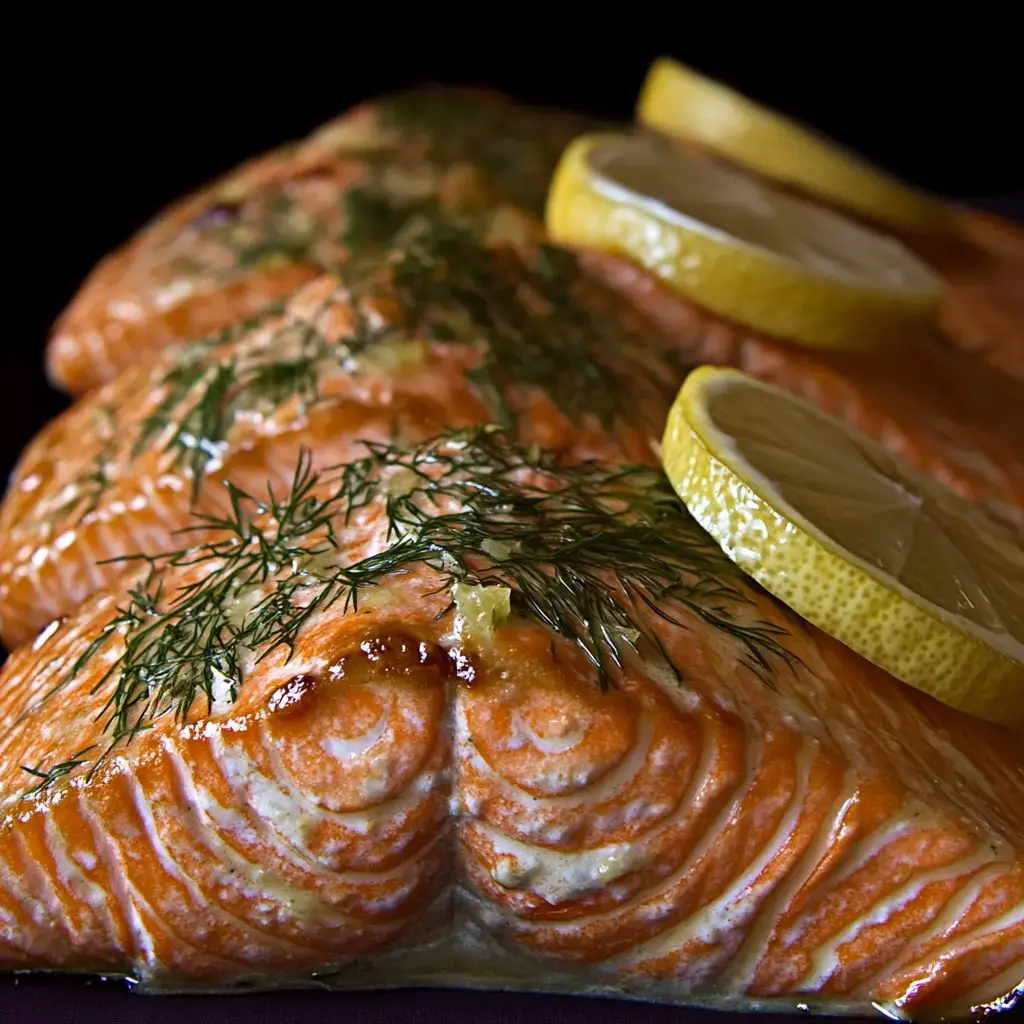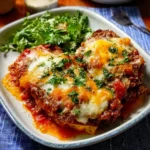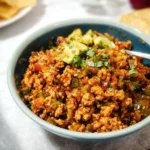Salmon is not just a tasty fish but a powerhouse of nutrients that can transform your meal into a healthy gourmet experience. When paired with fresh dill and the tangy zest of lemon, salmon becomes a culinary delight that is both easy to prepare and pleasing to the palate. In this article, we’ll dive into a simple, yet flavorful baked salmon recipe that can be perfect for any occasion, be it a family dinner or a special gathering. We’ll also explore the nutritional benefits, serving suggestions, and tips to make your baked salmon even more delicious.
Ingredients
To make this delightful baked salmon with dill and lemon, you will need the following ingredients:
- 2 salmon fillets
- 2 tablespoons olive oil
- 1 lemon (sliced)
- 2 tablespoons fresh dill (or 1 tablespoon dried)
- Salt and pepper to taste
Instructions
Follow these straightforward steps to prepare your baked salmon with dill and lemon:
- Preheat the oven to 400°F (200°C).
- Place salmon fillets on a baking sheet lined with parchment paper.
- Drizzle olive oil over the fillets and season with salt and pepper.
- Top with lemon slices and sprinkle dill on top.
- Bake for 12-15 minutes or until salmon flakes easily with a fork.
Nutrition Facts
Understanding the nutrition profile of your meal can help you make informed dietary choices. Here’s the nutritional breakdown per serving of this baked salmon dish:
- Calories: 350
- Protein: 34g
- Fat: 22g
- Carbohydrates: 2g
- Fiber: 0g
How to Serve
Baked salmon with dill and lemon is not only a delightful dish on its own, but it also serves as a fantastic centerpiece for a well-rounded meal. Its rich flavor and tender texture make it a versatile choice that can be paired with a variety of side dishes to enhance the overall dining experience. Here are some comprehensive serving suggestions that will elevate your baked salmon meal:
1. Rice or Quinoa
A serving of steamed rice or fluffy quinoa is an excellent way to complement baked salmon. Both options are neutral in flavor, allowing the savory juices from the salmon to shine through.
- Rice Options: You can opt for jasmine rice for a hint of floral aroma, basmati rice for its nutty flavor, or even brown rice for a whole grain option that adds a chewy texture. Cooking the rice in vegetable or chicken broth can infuse it with additional flavor.
- Quinoa Variations: Quinoa is not only gluten-free but also protein-rich, making it a healthy alternative. You can mix in herbs like parsley or cilantro for a fresh taste or toss in some cherry tomatoes and cucumbers for added color and nutrition.
2. Roasted Vegetables
Adding roasted vegetables to your plate not only enhances the visual appeal but also contributes essential vitamins and minerals.
- Vegetable Choices: Consider serving with seasonal vegetables such as asparagus, broccoli, or carrots. Toss these vegetables in olive oil, salt, and pepper before roasting them at high heat to bring out their natural sweetness and create caramelization.
- Flavor Enhancements: For an extra layer of flavor, you might add garlic, lemon zest, or even a sprinkle of parmesan cheese during the last few minutes of roasting. These additions can beautifully complement the dill and lemon notes of the salmon.
3. Salad
A crisp green salad is another excellent pairing that provides a refreshing contrast to the rich and buttery flavors of baked salmon.
- Salad Ingredients: Use a mix of greens such as arugula, spinach, and romaine for a variety of textures. Add sliced cucumbers, cherry tomatoes, and avocados for creaminess and color.
- Dressings: A light vinaigrette made with olive oil, lemon juice, and a touch of honey can enhance the salad’s freshness without overpowering the meal. You could also consider a yogurt-based dressing for a creamy option that still maintains lightness.
4. Pasta
For those looking to add a touch of decadence to their meal, consider serving baked salmon with lightly buttered pasta.
- Pasta Selection: Choose a shape that complements the salmon well, such as angel hair, fettuccine, or farfalle. Cooking the pasta al dente adds a pleasing bite that balances the softness of the salmon.
- Flavor Profile: Toss the cooked pasta with a small amount of butter or olive oil, and finish with a sprinkle of parmesan cheese, fresh herbs like basil or parsley, and a squeeze of lemon juice. This not only enhances the flavors but also ties the dish together, echoing the lemon notes from the salmon.
Additional Serving Tips
- Garnishing: Don’t forget to garnish your baked salmon with additional fresh dill or lemon slices for a pop of color and flavor right before serving.
- Serving Style: Consider serving the salmon whole on a platter for a family-style meal, or slice it into portions for an elegant plated presentation.
- Wine Pairing: To elevate the dining experience further, pair your meal with a chilled white wine, such as a Sauvignon Blanc or a Chardonnay. The acidity of the wine will complement the rich flavors of the salmon beautifully.
By thoughtfully pairing baked salmon with these side dishes, you can create a balanced and satisfying meal that pleases the palate and nourishes the body. Whether you’re hosting a dinner party or enjoying a quiet meal at home, these serving suggestions will help you make the most of your baked salmon with dill and lemon.
Additional Tips
To ensure your baked salmon is a culinary triumph every time, consider these comprehensive tips that will elevate your dish and enhance the overall cooking experience:
Fresh vs. Dried Dill
When it comes to flavor, the choice between fresh and dried dill can significantly impact your dish. Fresh dill offers a bright, herbaceous flavor that enhances the natural taste of the salmon and provides a burst of freshness. The delicate fronds of fresh dill can also add an appealing visual element when garnished atop the fish just before serving. If fresh dill isn’t readily available, dried dill can serve as an adequate substitute. However, remember that dried herbs are generally more concentrated, so use about one-third of the amount you would use if opting for fresh. A tip for maximizing the flavor of dried dill is to rub it between your fingers before adding it to your dish; this releases its essential oils and intensifies its aroma.
Lemon Zest
To elevate the citrus notes in your baked salmon, consider incorporating lemon zest into your preparation. The zest, which is the outer peel of the lemon, contains aromatic oils that impart a potent lemon flavor without the acidity of the juice. Simply use a microplane or a zester to finely grate the outer layer of a lemon before adding it to the salmon. A light sprinkle of lemon zest not only enhances the flavor profile but also adds a vibrant color that makes the dish visually appealing.
Marinating
If your schedule permits, marinating the salmon can take the flavors to a whole new level. Combine olive oil, fresh or dried dill, lemon juice, garlic, and a pinch of salt in a shallow dish, and let the salmon soak in this mixture for at least an hour before baking. This process infuses the fish with flavor and helps in keeping it moist during the cooking process. For those who enjoy experimenting, try adding a splash of soy sauce or a hint of honey to your marinade for a sweet and savory twist.
Check for Doneness
The perfection of your baked salmon hinges on its doneness. A reliable method to determine if your salmon is cooked to perfection is to check for flakiness. Gently press the salmon with a fork at the thickest part; if it flakes easily and the flesh appears opaque, it’s ready to be taken out of the oven. Keep in mind that salmon continues to cook even after it’s been removed from the heat due to residual heat, so it’s wise to take it out when it’s slightly undercooked. The ideal internal temperature for salmon is around 125°F for medium-rare. This will ensure that your salmon remains moist and tender, avoiding the common pitfall of overcooking, which can lead to a dry and tough texture.
Experiment with Seasonings
One of the joys of cooking salmon is the versatility it offers when it comes to seasonings. While dill is a classic pairing, feel free to experiment with a variety of spices and herbs to find your perfect flavor combination. For instance, adding minced garlic or garlic powder can introduce a savory depth, while a sprinkle of smoked paprika can provide a delightful smokiness. If you’re looking for a little kick, try adding a dash of cayenne pepper or red pepper flakes to introduce some heat. You might also consider experimenting with other herbs such as thyme, rosemary, or even a blend of Italian herbs to create unique flavor profiles. Mixing different seasonings can transform your salmon dish each time you prepare it, keeping your meals exciting and satisfying.
By incorporating these additional tips into your baking routine, you’ll not only achieve perfectly baked salmon every time but also delight your taste buds with a dynamic range of flavors and textures. Happy cooking!
FAQs
1. Can I use frozen salmon fillets?
Yes, you can use frozen salmon fillets. Ensure they are fully thawed and patted dry before proceeding with the recipe to achieve the best texture and flavor.
2. How do I know when the salmon is cooked through?
Salmon is done when it flakes easily with a fork and has an opaque appearance. A good rule of thumb is to bake it for about 4-6 minutes per ½ inch of thickness.
3. Can I prepare this dish on a grill instead of in the oven?
Absolutely! Grilling can impart a lovely smoky flavor to the salmon. Place the fillets on a hot grill and cook for about 4-5 minutes on each side, following the same seasoning steps.
4. What other herbs can I use if I don’t have dill?
If dill is not available, you can substitute it with other herbs like parsley, basil, or thyme to give a different flavor profile to your salmon.
5. Is this recipe suitable for meal prep?
Yes, this baked salmon recipe is great for meal prep. Once cooked, you can store the salmon in airtight containers in the refrigerator for up to three days.
Conclusion
Baked salmon with dill and lemon is the epitome of a simple, healthy, and delicious meal that combines elegance and ease. Its light yet flavorful profile makes it a standout dish, whether you’re preparing a quick dinner for yourself or serving a crowd at a special gathering. With minimal preparation and cooking time, this dish is an excellent option for busy weeknights or occasions when you want to impress without spending hours in the kitchen. The natural richness of the salmon, balanced by the bright tanginess of fresh lemon and the herbaceous notes of dill, creates a harmony of flavors that is both satisfying and refreshing.
What makes baked salmon with dill and lemon so appealing is its incredible versatility. You can easily adapt the recipe to your personal taste or experiment with additional ingredients to elevate the dish. Adding a touch of garlic, a sprinkle of chili flakes for heat, or a drizzle of honey for sweetness can take the flavors in different yet equally delicious directions. Pair the salmon with a variety of sides, such as roasted vegetables, steamed asparagus, quinoa, or a light green salad, to create a well-rounded and nutritious meal.
In addition to its culinary charm, baked salmon is packed with health benefits. As a great source of protein, omega-3 fatty acids, and essential nutrients, it supports heart health, brain function, and overall well-being. The simplicity of baking ensures that the fish retains its moisture and tenderness while requiring little added fat, making it a wholesome and guilt-free choice. By following the tips and suggestions provided, you can customize and enhance the dish to suit your palate, creating a meal that feels both indulgent and nourishing. Enjoy this vibrant, flavorful dish with the confidence that you’re making a healthy and delicious choice for yourself and your loved ones. Happy cooking!
Print
Baked Salmon with Dill and Lemon
Ingredients
To make this delightful baked salmon with dill and lemon, you will need the following ingredients:
- 2 salmon fillets
- 2 tablespoons olive oil
- 1 lemon (sliced)
- 2 tablespoons fresh dill (or 1 tablespoon dried)
- Salt and pepper to taste
Instructions
Follow these straightforward steps to prepare your baked salmon with dill and lemon:
- Preheat the oven to 400°F (200°C).
- Place salmon fillets on a baking sheet lined with parchment paper.
- Drizzle olive oil over the fillets and season with salt and pepper.
- Top with lemon slices and sprinkle dill on top.
- Bake for 12-15 minutes or until salmon flakes easily with a fork.
Nutrition
- Serving Size: one normal portion
- Calories: 350
- Fat: 22g
- Carbohydrates: 2g
- Fiber: 0g
- Protein: 34g





